Hello, Everyone!
This is “Angel Torazo”, the owner of TORAZOU.shop.
Speaking of mizuhiki, Japanese people meet several times a year ^ ^
This item is used for wrapping Oseibo and Ochugen gifts such as ceremonial occasions and condolence gifts.
But why is Mizuhiki used?
Actually, it’s not just wrapping, but Mizuhiki has different kinds and meanings, and each scene has its own rules of use.
Now, let’s dissect the charm of the deep Mizuhiki in order!
- First of all, what is Mizuhiki …?
- Types of Mizuhiki
- Iro-Mizuhiki (Colored Mizuhiki)
- Silk-Mizuhiki (Silk Mizuhiki)
- Kinumaki Mizuhiki or Kinu Mizuhiki (Silk-Covered-Mizuhiki)
- Hana-Mizuhiki (flower Mizyhiki)
- Hikari-Mizuhiki, Tokko Mizuhiki (Shine Mizuhiki)
- Hagoromo-Mizuhiki (Angel’s Raiment Mizuhiki)
- Miyabi-Mizuhiki (Graceful Mizuhiki)
- Akebono-Mizuhiki (Dawn Mizuhiki)
- Junkin-Mizuhiki (Pure Gold Mizuhiki)
- Sunako-Mizuhiki (Sand Mizuhiki)
- History of Mizuhiki
- Meaning of Mizuhiki
- Kind of Mizuhiki knot
- Summary
First of all, what is Mizuhiki …?
Mizuhiki is a thin string made of Japanese paper (Mizuhiki original paper).
Mizuhiki (Mizuhiki original paper) is made by twisting Japanese paper (made from thinly cut Japanese paper), applying glue, drying and hardening it.
Various kinds of Mizuhiki are completed by various processes on the Mizuhiki base paper.
Some Mizuhiki are colored in this state (Mizuhiki base paper), and other Mizuhiki are made by winding thin sheets of gold and silver or very fine fibers around Mizuhiki base paper.
Japanese paper is made into “koyori,” which is solidified by pulling water glue. It is said to have been named “mizuhiki” because it is “pulling water.”
Types of Mizuhiki
As mentioned above, there are different types of Mizuhiki.
Iro-Mizuhiki (Colored Mizuhiki)
Mizuhiki is a mizuhiki in which colors are applied directly to the washi (Japanese paper) that makes Mizuhiki.
“Iro-mizuhiki” has been used since ancient times as the origin of mizuhiki. A kind of mizuhiki that is popular for its glazed skin like pottery.
It is said that the origin of the name Iro-Mizuhiki comes from the fact that Mizuhiki base paper is painted with color.
Silk-Mizuhiki (Silk Mizuhiki)
Like Iro-Mizuhiki, Mizuhiki is a type of Mizuhiki made by directly dyeing Japanese paper (Mizuhiki original paper).
Because mica (silicate mineral that forms hexagonal plate-like crystals) is mixed into the dye, it is a gloss and beautiful finish mizuhiki.
In many of the current silk mills, the pearl-like technique is the mainstream with acrylic material made by pasting artificial mica. Because artificial mica is a very expensive material.
Kinumaki Mizuhiki or Kinu Mizuhiki (Silk-Covered-Mizuhiki)
The original Kinumaki Mizuhiki is a Mizuhiki made by winding silk threads (pure silk) around Mizuhiki original paper.
At present, the mainstream of Mizuhiki is Kinumaki Mizuhiki (Kinu Mizuhiki), which is a Mizuhiki material made by winding artificial silk (rayon) around Mizuhiki base paper.
People tend to think that silk threads are used because of the name silk, but in fact rayon threads are likened to silk and called Kinumaki Mizuhiki. It’s not pure silk now. (I think they have pure silk mizuhiki, too …)
However, when we say artificial silk, rayon is not a synthetic fiber (one of chemical fibers) made from petrochemical products such as nylon. Rayon is a recycled fiber (strictly speaking, one of chemical fibers) made from plant materials obtained from wood pulp. In addition, rayon is a fiber that can be returned naturally if processed, and the base paper for Mizuhiki is also Japanese paper (made of paper), so all of it is made from natural materials, making it an environmentally friendly material.
It is a kind of mizuhiki that is very popular because it has a soft touch like silk and a beautiful mud luster.
I think Mizuhiki is made from natural materials and has a beautiful elegant luster like silk, so our shop “TORAZOU” mainly uses Kinumaki Mizuhiki.
Hana-Mizuhiki (flower Mizyhiki)
Hanamizuhiki is the same as Kinumaki mizuhiki and the original Kinumaki mizuhiki is a mizuhiki made of mizuhiki base paper wrapped with silk thread (pure silk).
At present, the mainstream of Mizuhiki is Kinumaki Mizuhiki (Kinu Mizuhiki), which is a Mizuhiki material made by winding artificial silk (rayon) around Mizuhiki base paper.
The difference between Kinumaki Mizuhiki and Hanamizuhiki is mainly a subtle difference in color.
Kinumaki Mizuhiki is the basic color Mizuhiki that has been used for a long time, and Hanamizuhiki is a later product. It seems that Mizuhiki is a pastel colored light color or a bright fluorescent color.
Hikari-Mizuhiki, Tokko Mizuhiki (Shine Mizuhiki)
Hikari Mizuhiki (Tokko Mizuhiki) is made by wrapping a deposition film around a washi (Japanese paper) that is used to make Mizuhiki (Mizuhiki base paper).
The glittering luster of this item is beautiful.
It is said that the name came from the fact that there was the most “Hikari” stream in Mizuhiki that existed at that time.
Hagoromo-Mizuhiki (Angel’s Raiment Mizuhiki)
It is a mizuhiki in which gold or silver vapor deposition film is spirally wound on a colored mizuhiki.
This is a colored mizuhiki with a glittering luster that looks like it has glitter in it, and a noble shine.
It is said that the name comes from the fact that a twist of paper, which is a mixture of thread and plastic film, looks like a hagoromo.
Miyabi-Mizuhiki (Graceful Mizuhiki)
It is a mizuhiki in which a thin film of gold and silver is spirally wound on the colored mizuhiki.
It is a colorful and elegant Mizuhiki similar to Hagoromo Mizuhiki.
Akebono-Mizuhiki (Dawn Mizuhiki)
This is a mizuhiki with artificial silk (rayon) wound spirally on top of tokko mizuhiki.
It’s one of the most gorgeous and beautiful Mizuhiki.
It is said to have been named so because its appearance is bright and reminds people of the dawn when the sun rises.
Junkin-Mizuhiki (Pure Gold Mizuhiki)
The Japanese paper used to make mizuhiki (mizuhiki base paper) is coated with a special pure gold-like foil to create a brightly shining mizuhiki with a sense of luxury that has never been seen before.
Sunako-Mizuhiki (Sand Mizuhiki)
Like Tokko Mizuhiki, Sunakomizuhiki is a kind of Mizuhiki in which a vapor deposition film with a pattern similar to that of sprinkling sand is wrapped around Mizuhiki base paper.
The luster of this item is elegant.
As you can see, there are many kinds of Mizuhiki, and there are more kinds than those introduced here.
I will introduce it to you if I have the chance.
History of Mizuhiki
There are various theories, including one that originates from “Kenzuishi” (Japanese envoy to Sui Dynasty China) and another that originates from “Japan-Ming trade,” but it is not clear.
However, since there was paralysis dyed in red and white on the gifts brought back from Sui by ONO no Imoko as a Japanese envoy to Sui Dynasty China dating back to the Asuka period, there is a theory that red and white strings were tied as gifts in Japan. Since then, red and white strings have been tied to articles presented to the Imperial Court.
It is said that it became established as a custom among common people with the times.
Meaning of Mizuhiki
It is said that Mizuhiki has three meanings.
① It means to guarantee that it has not been opened.
② It means talisman.
③ It means’ en(縁) ‘that connects people by pulling strings.
Kind of Mizuhiki knot
This is a simple introduction to the types of knots that use various types of mizuhiki to form various shapes from beautiful curves that are intertwined in a complex way.
Awaji-Musubi (Awaji Knot)

👉 Purchase here (not yet available)
It is a kind of mizuhiki called ‘musubikiri.’
It is said to be the highest level of mizuhiki musubi which is the basis of all good and bad fortune, including Shinto rituals and Buddhist services.
Once you tie it, it is difficult to untie, so it is said that the wish of “one time only” is contained.
The word “Awaji musubi” also means “strongly tied” because the two ends of the string are pulled together to form a stronger knot.
It also includes the wish to “keep it firmly tied” and “keep it uninterrupted for a long time.”
Wearing an item with Awaji knot or wrapping it may bring in happiness.
Tama-Musubi (Ball Knot)
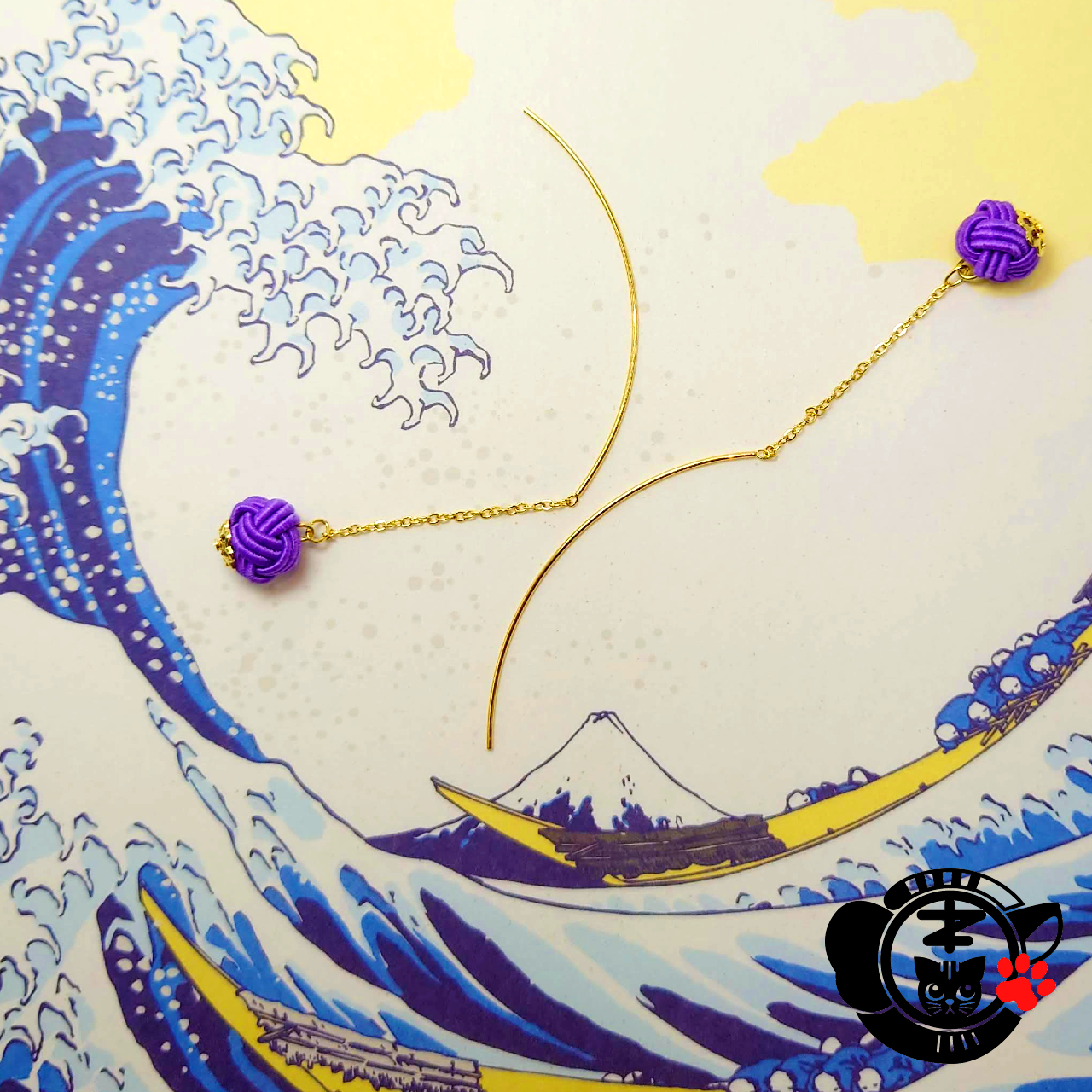
Tamamusubi is a knot from Awaji musubi to a ball shape.
It is also called “Awajidama” or “Marumusubi”.
It is the same as Awaji musubi, and contains the wishes of “just once”, “not to be interrupted for a long time” and “keep it firmly tied”.
Daki-Awaji-Musubi (Hag Awaji Knot)
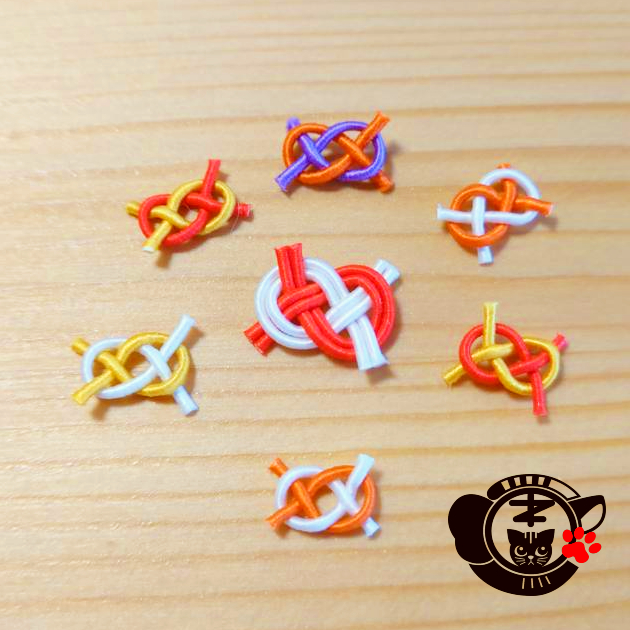
Dakiawajimusubi is a knot derived from Awaji musubi.
Awaji musubi is tied with a single line of mizuhiki, but the Awaji musubi that is tied by combining two lines of mizuhiki is called “Daki-awaji musubi.”
It has the same meaning as Awaji musubi “Once only, this time only.”, and is used for celebrations such as weddings and funerals.
We use red and white and gold and silver for auspicious occasions and black and white and black silver for mourning depending on the color of Mizuhiki.
It is a manner and a rule to set a light color (white, etc.) to the left and a dark color (red, black) to the right.
Ume-Musubi (Plum Knot)
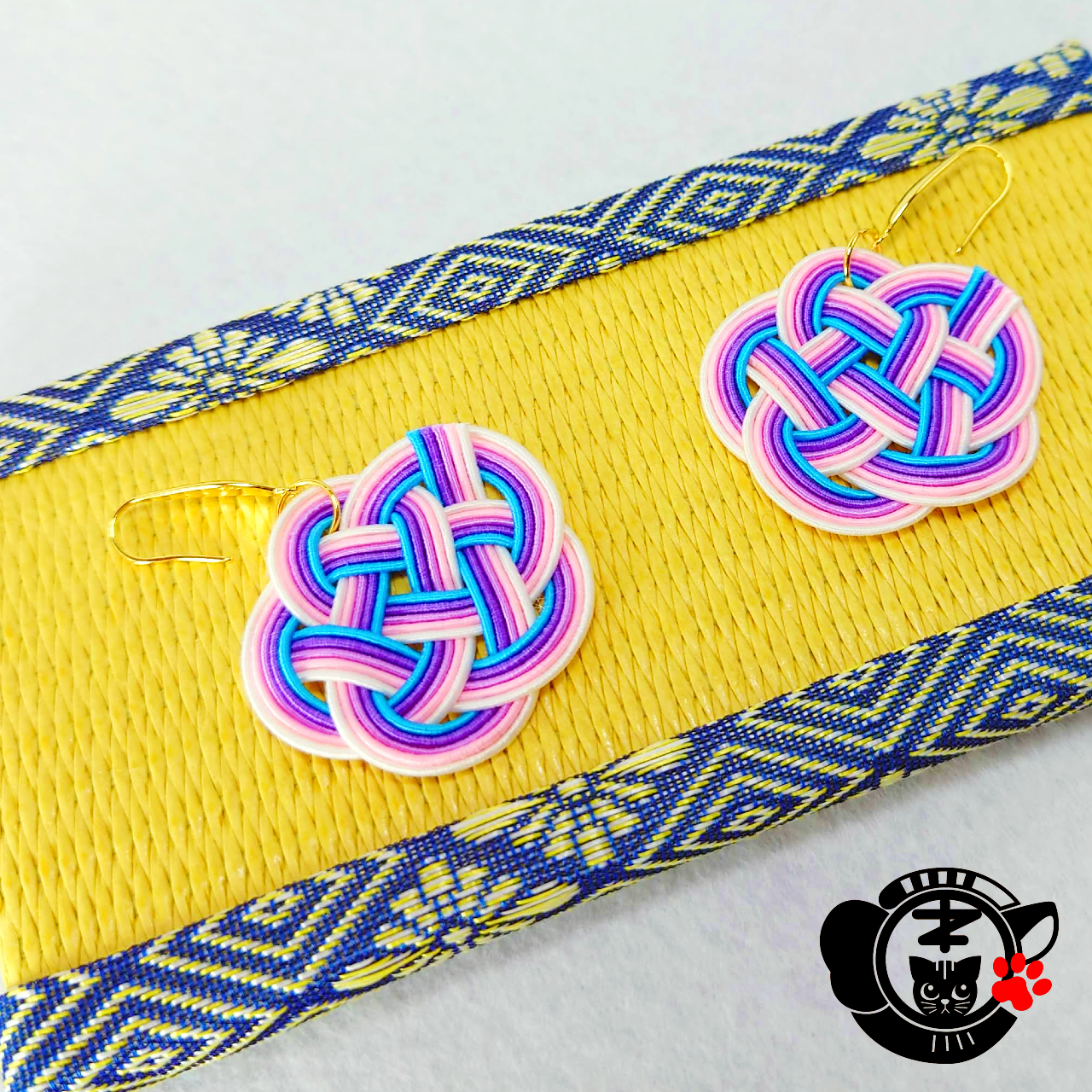
Ume-musubi is said to have three meanings.
① “Tight ties.”
② “A charm.”
③ “Improving Fate”
Ume is a flower that expresses “joy” because it patiently endures the cold of winter and blooms to announce the arrival of spring.
The elegant fragrance is a symbol of a rich life and is loved along with the beauty of flowers. In addition, it is considered to be an auspicious flower because it blooms red and white flowers, and plum knot is also used as an auspicious way of tying.
This is a knot that can be used in any celebratory scene.
Matsu-Musubi (Pine Knot)
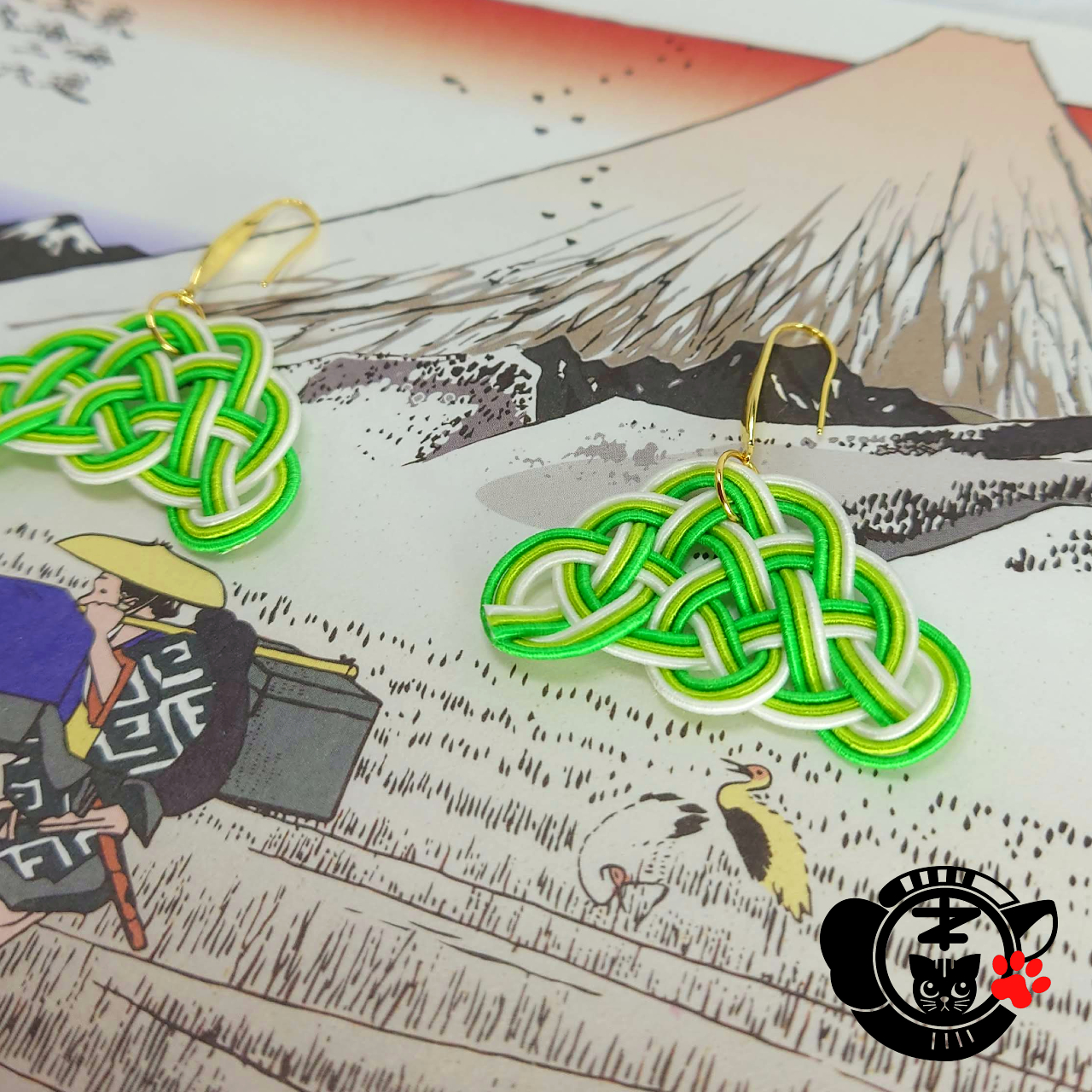 👉 Purchase here (not yet available)
👉 Purchase here (not yet available)
Matsu-musubi is also a modified form of Awaji musubi.
In Japan, pine has been said to be a tree where a god dwells from ancient times, and it has been considered to be a lucky tree.
In addition, it is said to be a symbol of eternal youth and longevity and a symbol of vitality because it always remains green even in the cold winter.
Kamenoko-Musubi or Kame-Musubi (Turtle Knot)
It is said that “Kamemusubi,” which is a modified form of Awaji musubi, was named because its shape resembles the back of a turtle.
“Kamemusubi” is also called “Kamenokomusubi” or “Kikkomusubi.”
In addition, as it is said that the crane is 1000 years old and the tortoise is 10,000 years old, the kamemusubi has the prayer of “wish for longevity”, and it is used as a celebration of happy events such as New Year’s Day and wedding celebrations.
Aioi-Musubi (Growing Old Together Knot)
The beautiful shape of the circle that crosses Mizuhiki is called Aioi-musubi.
Aioi musubi means “live together.”
In the same way of reading, it is also written as “Aioi”, which means “we are both old”.
This is an ornament that is often chosen for auspicious occasions such as weddings because it can be seen as a continuous loop of happy spaces.
Kesa-Musubi (Buddhist Stole Knot)
 👉 Purchase here (not yet available)
👉 Purchase here (not yet available)
Kesa-musubi is one of the decorative ways of tying used in shutara (ritual Shinto prayer), which is put on a priest’s kesa (Buddhist stole).
It is said that it is tied to keep the thankful words of Buddha not to fall far away.
There is no old record of Mizuhiki, so it is not a traditional way of tying.
There are many ways to tie other than the above types.
If I have a chance, I will add it.
Summary
How was it?
Mizuhiki is one of Japan’s beautiful traditional cultures.
It’s not just a decoration, each Mizuhiki has a meaning.
The more I check, the deeper the Mizuhiki is… ^ ^
I want to spread this wonderful Mizuhiki around the world, so I’m going to make Mizuhiki accessories!

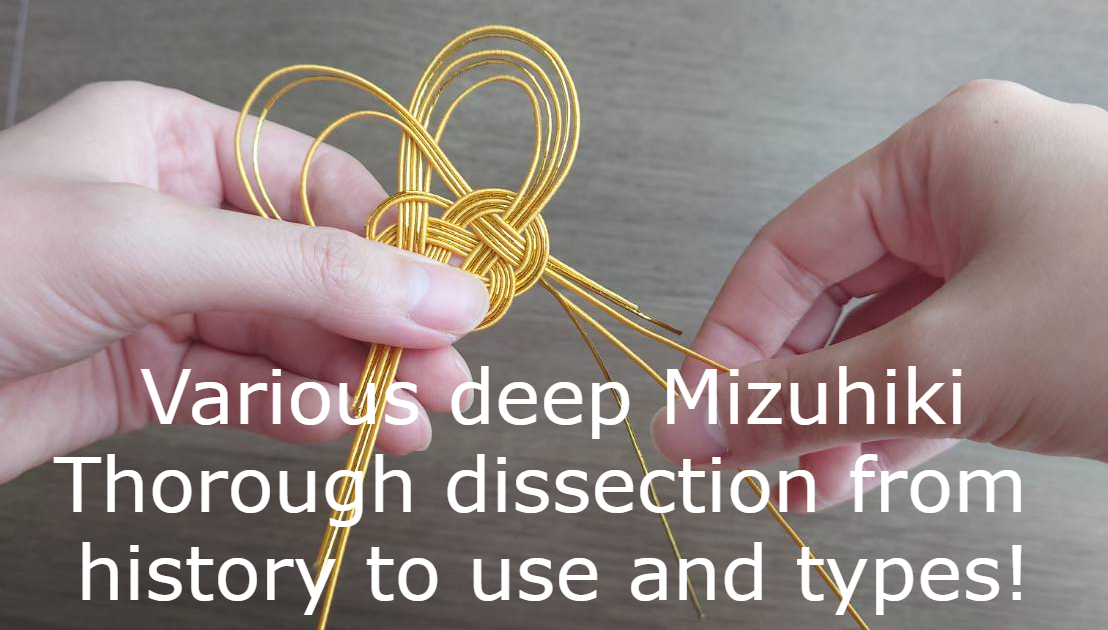
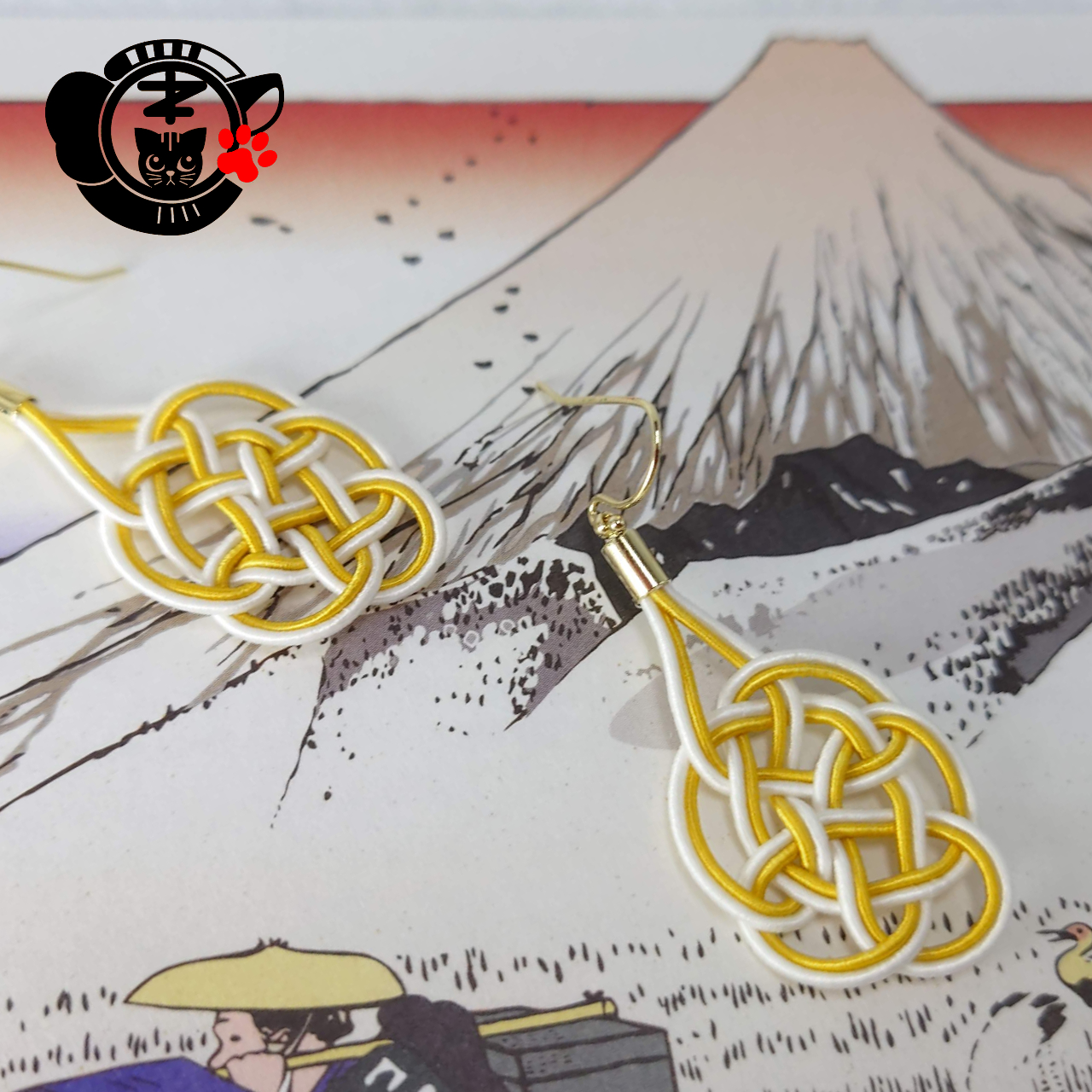 👉 Purchase here
👉 Purchase here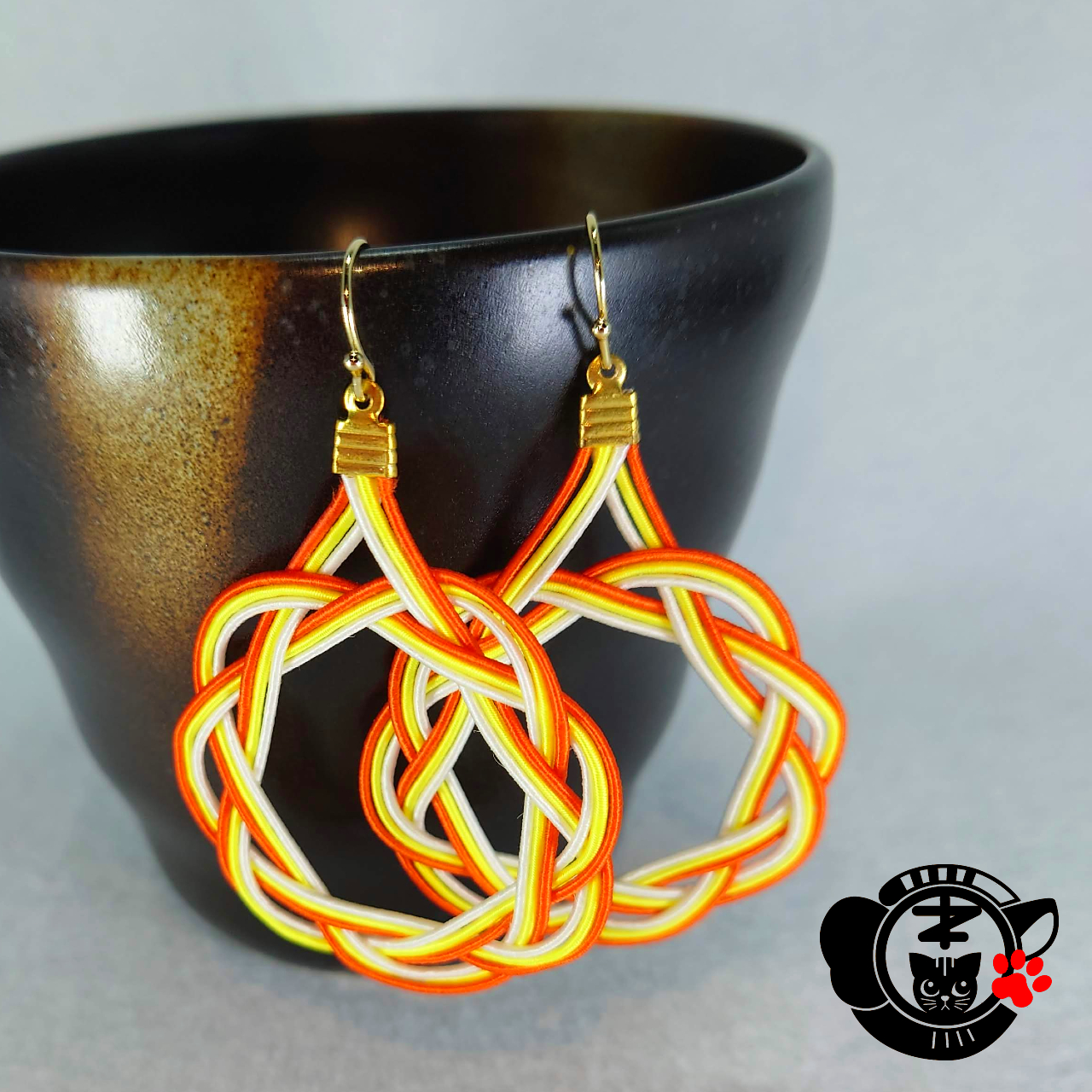 👉 Purchase here
👉 Purchase here

コメント